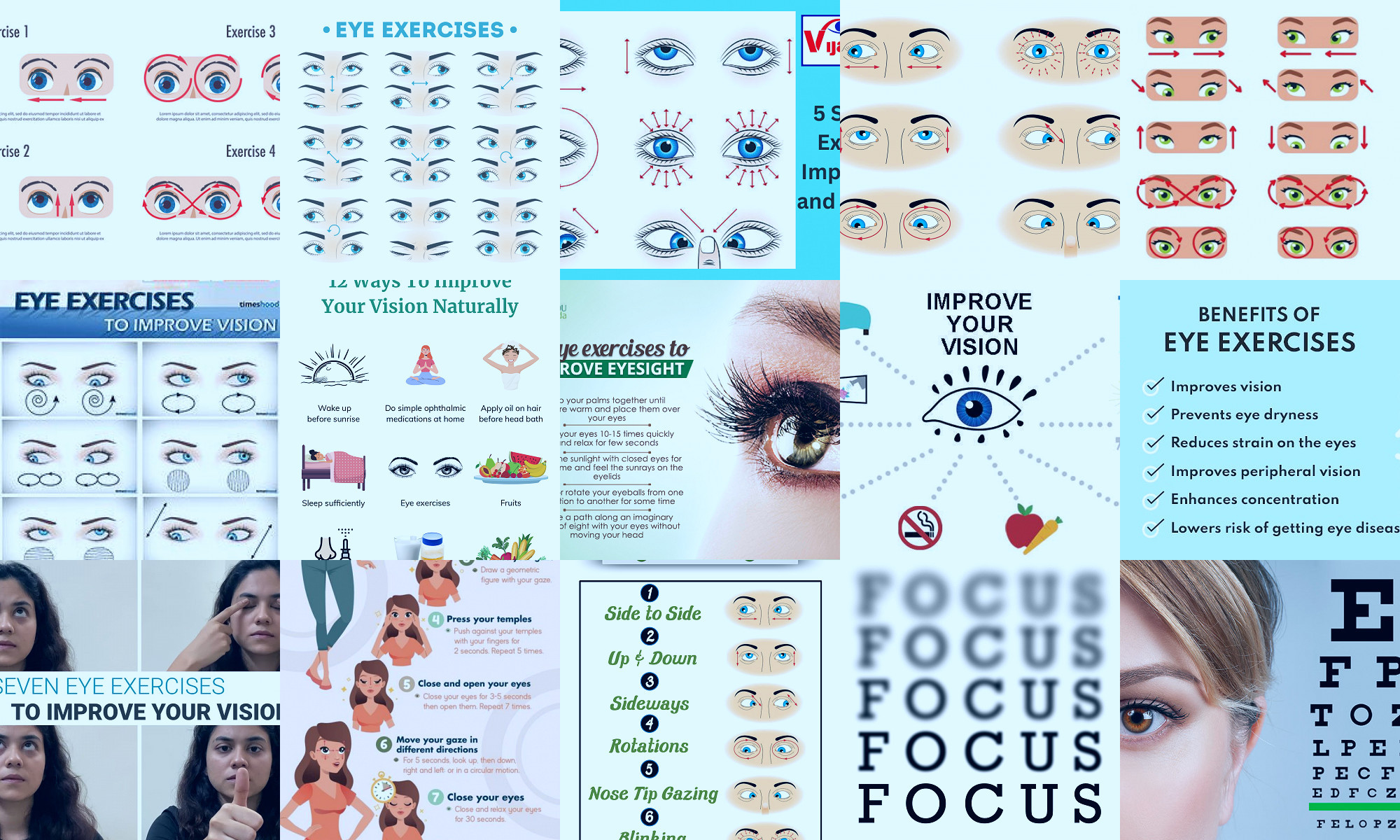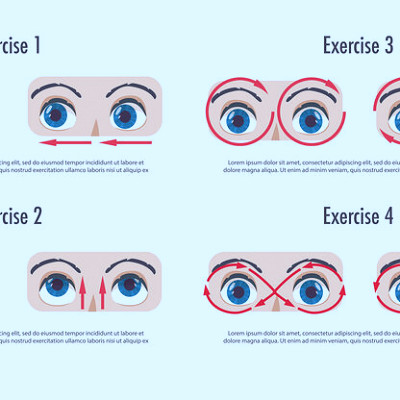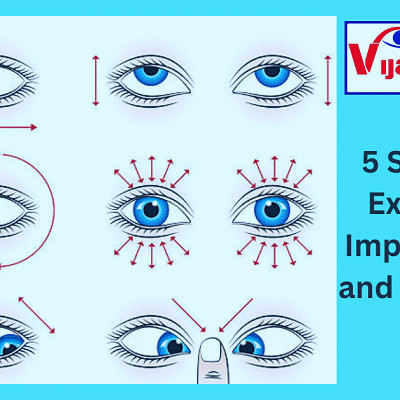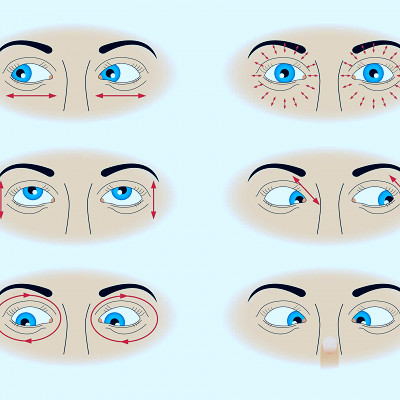 Jarlat Maletych/Shutterstock
Jarlat Maletych/Shutterstock
Features
Understanding Vision Health
Vision health is a critical part of our overall well-being, and it involves more than just having 20/20 eyesight. It also entails the ability to interpret and understand visual information that is unseen, such as identifying color contrasts, peripheral vision, and depth perception.
The Importance of Regular Eye Exercises
Engaging in eye exercises can promote better eye health, improve visual acuity, and help alleviate eye strain, especially in an era where digital screens have become a significant part of our daily lives.
The Blinking Exercise
Blinking moisturizes the eyes, which is especially crucial for those spending long hours in front of screens. It is recommended to blink every 3-4 seconds to maintain optimum eye health.
The 20-20-20 Rule
This rule suggests that after every 20 minutes of screen usage, you should look at something 20 feet away for 20 seconds. This practice helps to reduce digital eye strain.
Palming Exercise
Palming helps relax the eyes and mind. Place your warm palms over your eyes for a few minutes daily to experience its relaxing effects.
The Focus Shift Exercise
This exercise improves your eyes' focusing ability. It involves shifting your focus from near to far objects repeatedly.
The Figure Eight Exercise
Visualize a figure eight about 10 feet away and trace it with your eyes. This exercise helps enhance the flexibility of your eye muscles.
Eye Rolling Exercise
Rolling your eyes in a circular motion can help strengthen your eye muscles and enhance their movement range.
Eye Pressing Exercise
Closing your eyes and applying slight pressure on them with your palms can help relieve eye tension. However, avoid pressing too hard.
The Importance of a Balanced Diet
Consuming a balanced diet rich in vitamins A, C, E, and minerals like Copper and Zinc can significantly improve eye health.
The Role of Hydration
Keeping your body well-hydrated can help maintain your eyes' natural moisture levels and reduce symptoms of dry eyes.
Importance of Regular Eye Check-ups
Regular eye check-ups are crucial in detecting early signs of eye diseases and ensuring your vision's long-term health.
The Impact of Blue Light
Prolonged exposure to blue light from digital devices can lead to digital eye strain. It's advisable to limit screen time or use blue-light filtering glasses.
The Benefits of Adequate Sleep
Adequate sleep allows your eyes to rest, repair, and recover, thus maintaining good vision health.
The Role of Exercise
Regular physical exercise improves circulation, which leads to an increase in oxygen levels in the eyes and the removal of toxins.
UV Protection
Protecting your eyes from harmful UV rays can help prevent conditions like cataracts and macular degeneration.
Avoiding Smoking
Smoking can harm your eye health, leading to conditions like cataracts, macular degeneration, and dry eyes.
The Importance of a Clean Environment
Keeping your environment clean and free from dust and grime can help prevent eye infections.
The Role of Antioxidants
Antioxidants like Lutein and Zeaxanthin can help protect your eyes from harmful high-energy light waves like ultraviolet rays.
Conclusion
Maintaining good vision health is a multifaceted approach that involves regular eye exercises, a healthy diet, regular check-ups, and lifestyle modifications. By adopting these measures, you can significantly enhance your eye health and visual acuity.
Interesting notes and facts
1. Eye Yoga: An Ancient PracticeDid you know that yoga for eyes can improve your vision? Originated from ancient India, eye yoga includes exercises like blinking, palming, and sideways viewing. These techniques can relieve eye strain and improve focus, potentially delaying the need for glasses. It's a holistic approach to eye health that anyone can practice at home.
2. Flex Your Focus: Near and Far Viewing
Are you struggling with blurry vision after hours of screen time? Try the near and far viewing exercise. Look at an object close to you, then switch your gaze to a distant object. Repeat this process several times, flexing your eye muscles like you would flex your biceps. This simple exercise can help reduce digital eye strain.
3. Blinking: A Simple Exercise with Big Benefits
Blinking is often overlooked, but it's a powerful eye exercise. Regular blinking moisturizes the eyes, reducing dryness and irritation. It also gives your eyes a momentary break, which can help prevent eye strain. Try to blink every 3-4 seconds, especially when using digital devices, to keep your eyes healthy and comfortable.
4. Palming: A Relaxing Exercise
Palming is a soothing exercise that can help ease eye strain. By creating darkness and warmth with your palms, you're allowing your eyes to relax and refresh. All you need to do is rub your hands together to generate some heat and then gently place them over your closed eyes. This simple technique can work wonders after a long day of screen time.
5. Figure Eight: Imaginary Infinity
Figure eight is an engaging exercise that can help improve eye flexibility and reduce stiffness. Simply imagine an eight lying on its side (an infinity sign) and trace it with your eyes. This exercise stimulates the eye muscles, promoting better coordination and flexibility.
6. Zooming: Bringing Things Into Focus
Zooming is a dynamic eye exercise that can enhance your focusing skills. It involves focusing on an object and gradually bringing it closer to your eyes, then slowly moving it away. This exercise can help improve both near and far vision, making it easier to switch focus between different distances.
7. Visual Scanning: An All-around Exercise
Visual scanning involves looking around and taking in the details of your environment. This exercise helps enhance your peripheral vision and improves eye movement speed and accuracy. It's as simple as watching people in a park or observing the details of a painting.
8. 20-20-20 Rule: A Preventive Measure
Every 20 minutes, take a 20-second break and look at something 20 feet away. This rule is recommended by optometrists worldwide to prevent digital eye strain. It's a reminder to give your eyes a quick break from the intense focus required by digital screens.
9. Shifting: A Game of Rapid Shifts
Shifting is another exercise aimed at improving eye flexibility. It involves quickly shifting your gaze from one object to another. This rapid shift of focus can strengthen your eye muscles and increase their range of motion.
10. Eyelid Resistance Exercise: Building Strength
Using your fingers to create resistance while opening and closing your eyes can strengthen your eyelid muscles. Just like weight lifting for your body, this exercise builds muscle strength, improving the overall health of your eyes. It may seem unconventional, but it's worth a try!
Vocabulary
- Vision Health – The overall wellness and functionality of the eyes.
- Eye Exercises – Physical activities designed to strengthen the eye muscles and improve vision clarity.
- Visual Acuity – The sharpness of vision, usually measured with a Snellen chart.
- Astigmatism – A common vision condition that causes blurred vision due to the irregular shape of the cornea.
- Myopia – Commonly known as nearsightedness, a condition where distant objects appear blurry.
- Hypermetropia – Also known as farsightedness, a condition where close objects appear blurry.
- Presbyopia – Age-related loss of close-up vision.
- Dry Eye Syndrome – A condition caused by insufficient tear production, leading to dry, irritated eyes.
- Glaucoma – A group of related eye disorders that can cause damage to the optic nerve, often associated with a buildup of pressure inside the eye.
- Cataracts – Clouding of the eye's lens, leading to a decrease in vision.
- Macular Degeneration – An eye disease that progressively destroys the macula, the central portion of the retina, impairing central vision.
- Diabetic Retinopathy – A diabetes complication that affects eyes, caused by damage to the blood vessels of the light-sensitive tissue at the back of the eye (retina).
- Accommodation – The eye's ability to change its focus from distant to near objects.
- Orthoptics – The diagnosis and treatment of defective eye movements and coordination.
- Ophthalmology – The branch of medicine dealing with the diagnosis, treatment, and prevention of diseases of the eye and visual system.
- Optometry – The practice or profession of examining the eyes for visual defects and prescribing corrective lenses.
- Convergence – The simultaneous inward movement of both eyes toward each other, usually in an effort to maintain single binocular vision as an object comes near.
- Divergence – The simultaneous outward movement of both eyes away from each other, usually in an effort to maintain single binocular vision as an object moves away.
- Visual Perception – The ability to interpret the surrounding environment using light in the visible spectrum reflected by the objects in the environment.
- Refraction – The bending of light as it passes from one substance to another, used in eye exams to determine the level of prescription needed for corrective lenses.
- Vitamins for Eye Health – Specific vitamins that support eye health such as vitamin A, C, E, and zinc.
- Computer Vision Syndrome – Eye strain condition resulting from focusing the eyes on a computer display for uninterrupted periods of time.
- Vision Therapy – A program of eye exercises designed to correct vision problems.
- Blinking – A quick closing and opening of the eye, which helps to spread tears across and remove irritants from the surface of the cornea and conjunctiva.
- Saccades – Quick, simultaneous movements of both eyes in the same direction.
- Eye Yoga – A series of exercises that improve the muscles that control eye movements.
- Eye Relaxation Techniques – Techniques used to relax eye muscles and reduce eye strain.
- Blue Light – High-energy visible light, which may cause eye strain and interfere with sleep.
- Antioxidants – Substances that may protect your cells against free radicals, which play a role in heart disease, cancer, and eye diseases.
- Omega-3 Fatty Acids – Essential fats that help maintain the health of the retina.
- Lutein and Zeaxanthin – Antioxidants that are beneficial for eye health.
- Vision Supplements – Dietary supplements designed to enhance eye health and vision.
- Sun Protection for Eyes – Use of sunglasses to protect eyes from harmful UV rays.
- Regular Eye Checkups – Routine eye exams to maintain visual health and catch potential issues early.
- Healthy Diet – Consuming foods that are high in vitamins and minerals to support overall and eye health.
- Hydration – Drinking sufficient water to maintain eye health by preventing dryness.
- Sleep – Adequate rest is essential for eye health as it allows overworked eye muscles to relax.
- Eye Hygiene – Keeping the eyes clean to prevent infections and diseases.
- Smoking and Eye Health – Smoking can lead to vision loss by damaging the tissues of the eye.
- Alcohol and Eye Health – Excessive alcohol can lead to vision problems and damage to the optic nerves.
- Screen Time – The amount of time spent looking at digital screens and its impact on eye health.
- Eye Strain – Discomfort in the eyes caused by excessive use, especially in dim light or while using a digital device for prolonged periods.
- Binocular Vision Disorders – Conditions where the eyes are unable to align properly leading to problems with depth perception and coordination.
- Eye Allergies – Allergic reactions that cause red, itchy,



